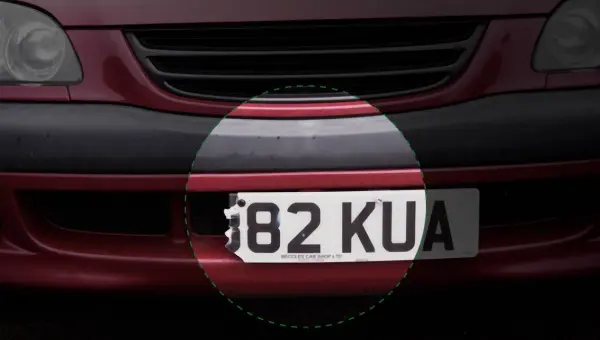Identification
Identification is an essential step to ensure that the inspection is performed on the correct vehicle. These verifications are especially important when buying a used vehicle or during police checks of vehicles. During the vehicle inspection the inspector checks that your vehicle conforms to regulation. He pays particular attention to the license plates, the Vehicle Identification Number (VIN) and the general condition of your vehicle.
Licence Plates

ROLE: to allow a quick identification of the vehicle by third parties (in the event of an accident) or by the police.
License plates are located at the front and back of the vehicle.
Risks if non-compliant:
- If the license plates do not conform to the regulation or if they are in bad condition, missing or difficult to read, a fine may be issued during a police check. License plates must also be securely fitted and displayed in the correct place.
Vehicle Identification Number (VIN)

ROLE: it is a security feature that displays details of the vehicle's unique features, specifications and manufacturer. It is checked to establish the true identity of a car.
VIN is a unique alphanumeric character sequence etched onto a metal plate and a self-adhesive label that is attached onto the vehicle’s frame and is irremovable.
Risks if non-compliant:
- If the VIN information is incorrect (incomplete, missing a number or the number does not correspond with the registration papers) a vehicle different from the one that is indicated on the registration papers may have been purchased.
- An incorrect or damaged VIN may also lead to issues in the event of a recall campaign by a manufacturer.
General condition of a vehicle

ROLE: to ensure the general condition of the vehicle is good enough so that operations can be performed in order to obtain an accurate and reliable inspection.
The condition of the vehicle must be good enough to allow for all operations to be carried out during the inspection of the vehicle. The vehicle’s details must correspond with the registration papers and any significant modifications must be registered.
The components and systems must not only operate independently but also in combination with one another. This capability is checked during the general condition inspection of the vehicle.
Risks if non-compliant:
- Engine failure may occur, in this scenario brake and emissions tests would be impossible to carry out or could lead to inaccurate results.
- If access is prohibited in the vehicle (for instance a trunk is too full or a door won’t open) or if the vehicle is excessively dirty, it would be impossible to check some mandatory components during the inspection.
- If the vehicle is overloaded or has been excessively modified, the inspection will not be authorized as test results would be unreliable.